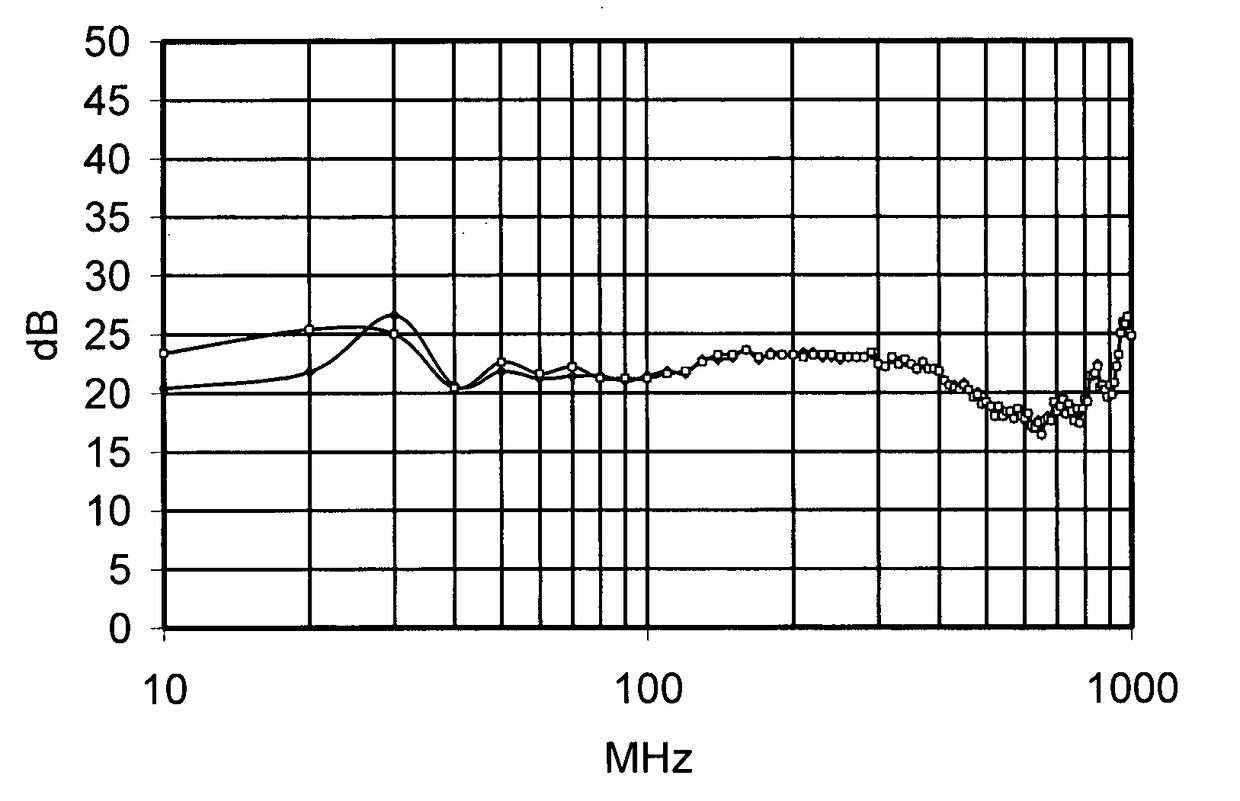Energy-shielding plastics film
a technology of energy-shielding plastics and film, applied in the direction of superimposed coating process, ion implantation coating, magnetic recording, etc., can solve the problems of excessive heat loss, undesired high energy absorption, and high cost, and achieve high “shielding effectiveness, less disruption or undesired capture
- Summary
- Abstract
- Description
- Claims
- Application Information
AI Technical Summary
Benefits of technology
Problems solved by technology
Method used
Image
Examples
example 1
[0078]A plastics film 1 according to the present invention was produced in the following manner. The film consists, in the following order, of a transparent carrier layer with on one side a hard coat protection layer, and on the other side first a first metal layer, next a silver-containing layer, subsequently a third metal layer, on top of it an adhesive layer or adhesive, on top of it another embedding layer, followed by a second adhesive layer.
[0079]The production starts by applying the metallic layers on the plastics carrier layer using DC magnetron sputtering deposition. The carrier layer was manufactured from polyethylene terephthalate (PET), and had a thickness of about 23 μm. The indicated metal concentrations below are expressed in weight units, and are related to the weight of the total film, without the optionally existing stripping layer.
[0080]The first metal sublayer which was applied, comprised chromium (0.8 ppm), zinc (1.5 ppm), nickel (9.3 ppm) and indium antimonide ...
example 2
[0087]A window with double glazing was coated on the inside for about half of its surface with the plastics film 1 of example 1. With an infra-red camera the temperature of the interior surface was measured. Where the film was applied, a temperature of about 23.4° C. was measured, whereas the glass surface without film had a temperature on its surface of about 18.6° C. This experiment shows the effectiveness of the film for reflecting long wavelength heat radiation, and therefore the heat-isolating effect.
example 3
[0088]Two glass surfaces were provided with a layer of respectively plastics films film 2 and film 3 of example 1. Of these glass surfaces, the Shielding Effectiveness (SE) for electromagnetic radiation was measured with a TEM-t cell according to ASTM D4935, over the frequency range of 10 MHz to 1 GHz. The results of this determination allow to predict the behaviour of these films under the conditions of IEEE 299 or some other standards.
[0089]The results are shown in FIG. 1. For the major part of the tested frequency range, an SE or damping factor was measured of at least 20 dB. The SE even increased to more than 25 dB at frequencies of 20-30 MHz, and also at frequencies of 120-170 MHz. Only at frequencies between 180 and 700 MHz, a slightly lower SE was measured of nevertheless still at least 17 dB. The average damping value over the entire frequency range equaled 22 dB. These results are considerable, if one realises that a damping of 20 dB leads to a reduction of the electromagne...
PUM
| Property | Measurement | Unit |
|---|---|---|
| transparent | aaaaa | aaaaa |
| thickness | aaaaa | aaaaa |
| thickness | aaaaa | aaaaa |
Abstract
Description
Claims
Application Information
 Login to View More
Login to View More - R&D
- Intellectual Property
- Life Sciences
- Materials
- Tech Scout
- Unparalleled Data Quality
- Higher Quality Content
- 60% Fewer Hallucinations
Browse by: Latest US Patents, China's latest patents, Technical Efficacy Thesaurus, Application Domain, Technology Topic, Popular Technical Reports.
© 2025 PatSnap. All rights reserved.Legal|Privacy policy|Modern Slavery Act Transparency Statement|Sitemap|About US| Contact US: help@patsnap.com


